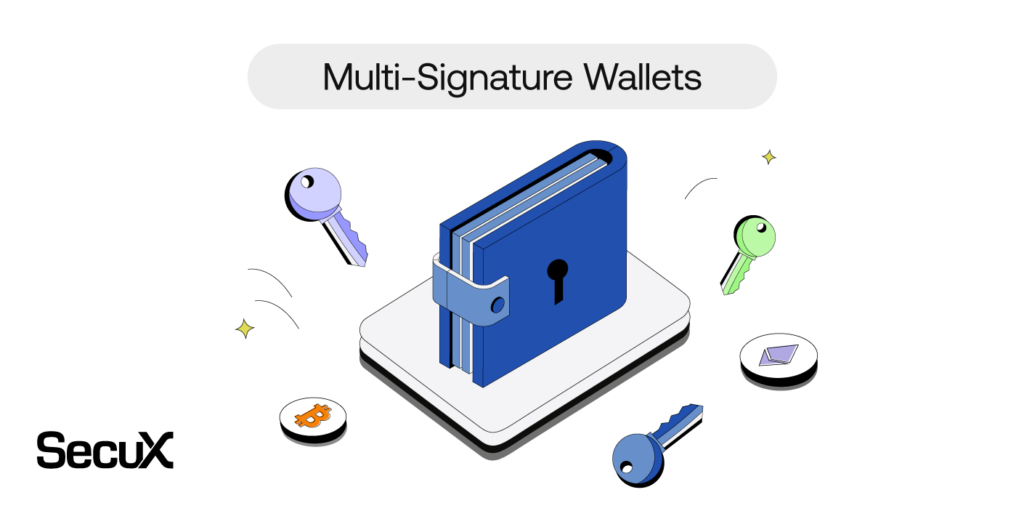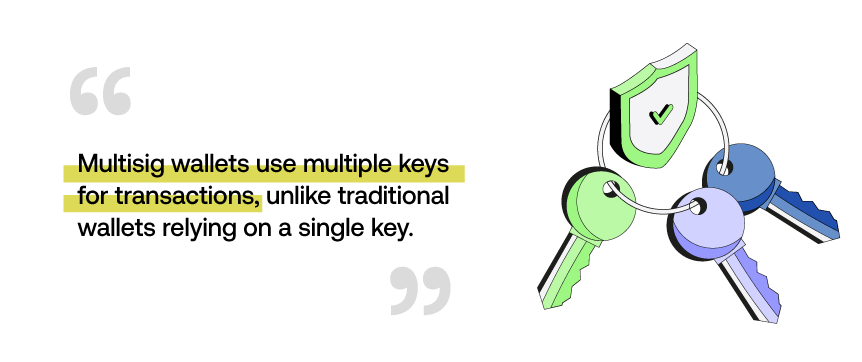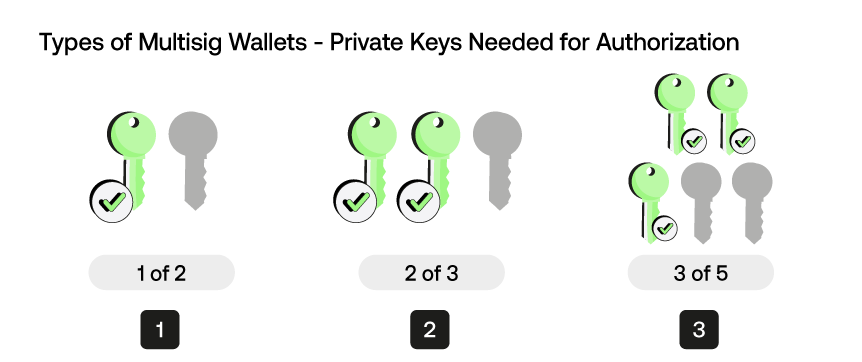
Disclaimer: The information provided in this article is for educational purposes only and should not be considered as financial advice.
Security has always been one of the primary concerns in the world of cryptocurrencies, and multi-signature wallets are gaining attention for their reliability. These wallets need more than one private key to make transactions, making it harder for unauthorized access or theft. This sounds like a robust safety measure, but before you decide if they’re right for you, let’s take a deeper look at multi-signature wallets.
Multisig Wallets Explained

What is a multisig wallet anyway? Multisig, short for “multi-signature,” is a security feature that is quickly gaining popularity in cryptocurrency wallet technology. At its core, a multi-signature wallet is designed to enhance the security of your digital assets by requiring multiple private keys to authorize transactions.
Unlike traditional wallets that rely only on a single key or password, multisig wallets distribute the responsibility of a wallet’s security among a group of trusted individuals.
Benefits of a Multisig Wallet
- Enhanced Security: One of the biggest advantages of a multi-sig wallet is its increased security. With multiple keys required for any transaction, the risk of a weak point, or single point of failure is reduced – by a lot. This means that if one key is compromised, your assets are still secure.
- Reduced Risk of Unauthorized Access: Multisig wallets not only bolster security but also reduce the risk of unauthorized access. To conduct any transaction with your assets, an attacker would need to compromise multiple keys simultaneously, which is considerably more difficult than targeting a single key.
- Control and Trust: Multisig wallets provide a mechanism for shared control and trust among a group. Because of this, they are particularly useful for organizations or groups where multiple individuals need to manage a crypto wallet or currency together.
Are There Risks?
While multisig wallets do offer more security, they are unfortunately not without risks:
Setting up and managing multisig wallets can be more complex than single-key wallets. This raises the bar for beginners and makes it more difficult for those new to the space to adopt. Users must securely store multiple private keys and coordinate key holders.
If the holders lose access to their keys, it’ll begin a challenging journey to try and regain access to the funds. Key recovery mechanisms should be carefully planned and implemented.
Multisig wallets rely on the responsible actions of all key holders. If a key holder becomes disappears or refuses to cooperate with the majority, it can disrupt wallet operations.
Types of Multisig Wallets
There are also various types of multisig wallets that offer different levels of security, with the most common being:

1 of 2
This type is the most basic and requires two keys for authorization. It is often used for personal accounts where the user holds one key, and a backup is stored securely or with a trusted person.
2 of 3
2 of 3 involves three keys, with any two of the three keys needed for authorization. This setup is suitable for shared accounts among family members or business partners.
3 of 5
3 of 5 requires five keys, with any three being enough for authorization. This type provides even greater security and is ideal for larger organizations.
Collaborative Custody
Collaborative custody models involve multiple entities, such as institutions and individuals, sharing control over funds. Each entity may have its keys, and a predefined number of them must agree on transactions.
How Multisig Wallets Work
The operation of a multisig wallet involves several key concepts:
- Multisig Address: When setting up a multisig wallet, a unique address is generated that requires a specified number of signatures for transactions.
- Key Holders: The individuals or entities responsible for holding private keys are referred to as key holders. The number of key holders required for authorization is determined by the chosen multisig configuration (the ones we listed above).
- Transaction Authorization: To initiate, you would need the required number of key holders to sign a transaction with their private keys. The transaction can only be executed when the necessary number of signatures is obtained.
- Security Protocols: Multisig wallets often incorporate additional security protocols, such as time locks or spending limits, to further protect the funds.
Who Should Use Them
Multisig wallets are not for everyone. After all, you can’t choose to use one if you want to hold sole control. But, they are a valuable tool for various use cases:
Businesses: Companies dealing with cryptocurrencies can benefit from multisig wallets to secure their digital assets and distribute control among multiple employees or executives.
Families: A multisig wallet is also good for families managing shared cryptocurrency holdings. They provide an added layer of security and trust, ensuring that multiple family members agree on transactions before they are carried out.
Long-Term Investors: Investors looking to store cryptocurrency holdings securely for the long term may also choose to use multisig wallets to reduce the risk of unauthorized access or theft.
Joint Ventures: Collaborative projects and ventures involving multiple parties can use multisig wallets to manage and secure shared funds.
Conclusion
Multisig wallets can be seen as a significant advancement in cryptocurrency security. Their ability to distribute control by requiring multiple signatures for transactions makes them an excellent choice for people seeking enhanced protection for their digital assets.
However, users should carefully consider the complexity and risks associated with multisig wallets and ensure that they align with their specific needs and goals. When used correctly, multisig wallets offer a solution for safeguarding your crypto.
Related Articles
Truncation in Cryptography: Privacy in the Digital Age
Trust VS Security in the Crypto World – Are They the Same?

0 comments